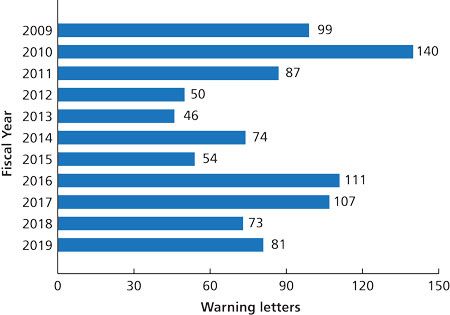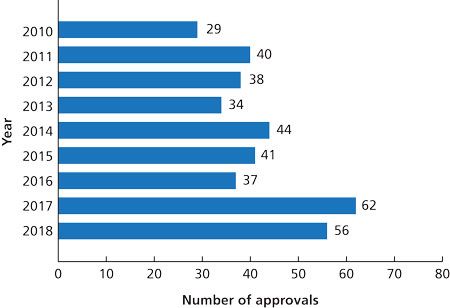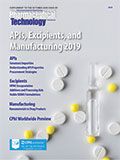Planning a Successful API Procurement Strategy
Sourcing hard-to-find ingredients and establishing a reliable supply chain can stretch the resources of a small- to mid-size pharma company.
Editor’s note: A version of this article was published in Pharmaceutical Technology Europe’s APIs, Excipients, and Manufacturing 2019 Supplement.
scottchan - stock.adobe.com

The age of “blockbuster” medicine, when the market was ruled by multibillion-dollar drug manufacturers producing a small number of products in large quantities, has begun to expire. With its decline comes a new, more complex marketplace that favours generic drugs over branded giants, personalized therapies over one-size-fits-all medicine, and novel formulations and drug delivery systems over traditional approaches.
The result is an increasingly diverse and more complex industry. Small- and mid-sized drug development companies are vying to offer differentiated and innovative drug products in a crowded market. Such innovation requires increasingly specialized and hard-to-find APIs. Small, lean companies that specialize in pharmaceutical development, not supply chain logistics, often struggle to source unique ingredients from manufacturers around the world under aggressive timelines and in quantities suitable for each stage of development.
Intensifying regulatory pressure adds to these challenges. Previously, regulatory authorities focused primarily on the purity and integrity of the drug product itself; today’s health authorities have extended their reach to incorporate a product’s entire chain of custody. In the United Kingdom, the Medicines and Healthcare products Regulatory Agency recently prioritized supply chain integrity in its five-year corporate plan (1). The European Commission’s November 2013 update to its Guidelines on Good Distribution Practice of Medicinal Practice for Human Use also reflects a drive toward global traceability. Also in November 2013, the US Congress enacted the Drug Supply Chain Security Act, giving the US Food and Drug Administration (FDA) enhanced abilities to enforce elevated trackability and product verification standards.
These guidelines demonstrate how regulators have extended oversight over the entire supply chain, leading to a higher incidence of compliance actions. The number of warning letters issued in the United States more than doubled between 2012 and 2016 (Figure 1).
Figure 1: Warning letters issued against drug establishments in the United States. Data source: FDA Data Dashboard as of 15 August 2019 (2).

Drug companies grappling with the challenges of API procurement must not only manage their own quality systems, but also must ensure the quality of their supply chain, including elements outside of their control. An API manufacturer with poor infrastructure or improperly applied standard operating procedures (SOPs) can introduce consequences for the entire drug development process, putting developers at risk for regulatory sanctions. Collectively, these challenges risk knocking even the most visionary drug development companies to the sidelines, struggling with API quality, logistical issues, or the complications of regulatory approval.
By understanding the challenges involved in sourcing hard-to-find APIs, developing transparent and scalable manufacturer relationships either independently or with support from a qualified expert, and maintaining end-to-end regulatory approval, drug developers can avoid unforeseen quality, logistical, and regulatory roadblocks.
Looking for a niche API in a haystack
The 505(b)(2) accelerated drug approval pathway was enacted in the 1984 Hatch-Waxman Amendments of the US Federal Food, Drug, and Cosmetic Act to encourage innovation in the development of new formulations, indications, or delivery systems for existing active ingredients. Under the pathway, drug companies can use safety and efficacy information for APIs from studies of previously approved agents, allowing them to stretch the value of existing clinical knowledge and unlock novel drug applications.
Today’s startup culture-enabled by modern technology and a surge in expired patents and exclusivity agreements-is behind an increase in 505(b)(2) applications (Figure 2). This competitive move toward innovation provides consumers with more treatment options; however, drug companies pursuing the 505(b)(2) pathway may have difficulty finding small batches of hard-to-find ingredients for research activities.
Figure 2: Number of 505(b)(2) approvals issued in the United States. Data source: GlobalData Intelligence Center (3).

Many large, established API manufacturers do not offer the modest quantities that 505(b)(2) innovator companies need to sustain R&D programmes. A less-established manufacturer may not have the infrastructure or expertise to produce an unfamiliar compound; developing that infrastructure takes capital that API manufacturers may not be willing or able to devote to a 505(b)(2) project, especially for a modest batch size.
Securing a hard-to-find API in a low volume requires an understanding of the current API manufacturing landscape. Subscription databases that track API-manufacturer capabilities and meetings at trade shows with API manufacturers may be cost-prohibitive for small players without in-house procurement capabilities.
Scaling up supplier support
A small drug company may be able to find a manufacturer to supply a small quantity-say 50 kg-of a niche API for efficacy and safety testing. After that testing is complete and the formulation has proven successful, the drug company must contact the API manufacturer for a larger order-perhaps 750 kg-to prepare for commercialization. The original batch size of 50 kg is too small; running 15 batches of that size would take too long and cost too much. A request to increase volume to five batches of 150 kg may not be readily met.
Companies that pre-qualified the API manufacturer by discussing scale-up requirements early on are in a good position. The manufacturer has bought into the expected growth curve and has the spare capacity to fulfill orders through every developmental phase.
Those companies are in the minority. Due to competitive pressures, many companies focus on testing and shepherding their product through R&D. Few are aware of the proper questions to ask when negotiating future capacity with a manufacturer, which often results in unpleasant late-stage discoveries: the API manufacturer doesn’t have the capacity to scale, or they do but only with additional instrumentation and validation. Suddenly, the whole project is at risk.
Finding the right partner to match the phase of development and grow with the developing drug is crucial and can be difficult, without specific expertise.
You cannot afford non-compliance. Period.
While a drug in development has unique API, batch size, and financial requirements, all companies face similar challenges with regulatory oversight and identifying compliant API manufacturers. Assuming a manufacturer is competent because it has a customer list can lead to a false sense of compliance.
Even more reassuring is a facility with a certificate of good manufacturing practice (GMP), which drug companies can research using databases such as the European Medicines Agency’s EudraGMP or FDA’s Inspection Classification Database Search.
Having customers-or holding a certification-should not be a threshold of quality assurance. Have those customers filed complaints? Is the certification out of date? Is the manufacturer fraudulently claiming the identity of a certified establishment? A regulator’s inspection report is no guarantee of compliance; it’s not a promise. It’s just one of many factors to consider when developing a potential vendor’s risk profile.
The other factors require more digging to uncover. This difficult task makes it tempting for a small company to believe that an aging GMP certificate guarantees compliance. Sometimes it does, but when it doesn’t, the consequences can be catastrophic. The API could be snarled in importation paperwork, sustain damage from improperly controlled temperatures, or be out of specification when it arrives, rendering it unusable. These outcomes could lead to stalled production, expired patents, lost investment, and a shredded reputation. Such doomsday scenarios are rare; however, digging-or due diligence-can eliminate the possibility of catastrophe.
It’s likely not possible to visit every potential manufacturer; digging comes down to asking the right questions early and from afar. What SOPs are in place to ensure proper cleaning and sterilization in the facility? How are temperature specifications determined and controlled? How are products labelled? How are they transported and stored? How are rodents and other pests eliminated? How are staff trained and evaluated? How are deviations and complaints handled? What software is used and is it validated? How are data backed up and how often?
These questions are not about the manufacturing process per se, but rather about the ancillary systems that support it. These systems make up a manufacturer’s holistic quality management protocol, and together paint a picture of that manufacturer’s integrity. The best way to ensure that a product will arrive a high-quality, compliant compound with a transparent chain of custody is to do this digging or hire an expert to do it. The cost may pinch at first, but better the discomfort of a pinch today than the knock-out punch of catastrophe later.
Proceed with caution
It’s hard to move fast in the drug development space, even on the 505(b)(2) pathway. Pre-qualifying a manufacturer for a specialized, low-volume API supply can slow down the process. Moving APIs from another global location to a facility takes domain expertise, experience with regulatory protocols, and access to the right players at the right time. Regulators will inspect every node in the chain of custody; drug companies must know that chain well and trust it completely.
Drug companies with large in-house sourcing and procurement teams can perform these functions internally. Smaller companies-operating without such a team-should follow this piece of advice: find a way to become, to hire, or to partner with a supply chain expert.
Becoming a supply chain expert will require time, which must be siphoned away from the original purpose of developing a novel drug therapy. Hiring an internal sourcing team is a good option, if that bandwidth is available. For most companies, partnering with an API procurement and supply chain expert is the most cost-effective route, particularly if that expert has a strong quality assurance programme and incorporates on-site audits as part of its assessment criteria. These are specialists that understand regulations and have strong manufacturer relationships around the globe, which means small companies can negotiate like big ones, and those new to regulatory scrutiny are assured of continuous compliance.
Whatever the chosen approach, the key is to obsess over every detail throughout the supply chain, leaving nothing to chance, and taking no manufacturer’s assurance of competence or integrity at face value. Don’t gamble the success of an innovative new drug on a suspect supply chain; trust API procurement to those with the expertise to manage it.
References
1. Medicines and Healthcare products Regulatory Agency, Corporate Plan 2018–2023 (April 24, 2018).
2. FDA, Compliance Data Dashboard, accessed Aug. 15, 2019.
3. GlobalData, Intelligence Center, globaldata.com.
About the Authors
Selwyn Lustman is senior vice-president global sourcing and procurement; Lina Cogan is senior director of global sourcing and procurement; and Hamilton J. Lenox is senior vice-president, business development, all with LGM Pharma.
Article Details
Pharmaceutical Technology
Supplement: APIs, Excipients, and Manufacturing
October 2019
Pages: s34–s36
Citation
When referring to this article, please cite it as
S. Lustman, L. Cogan, and H. J. Lenox , “Planning a Successful API Procurement Strategy," Pharmaceutical Technology APIs, Excipients, and Manufacturing Supplement (October 2019).
